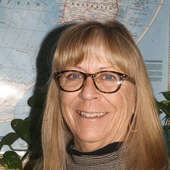- Research tips and McCook Brick Company- solid as a brick (12/16/24)
- Big Give appreciation and some railroad characters (11/15/24)
- George Randel becomes a landowner, gets married, and takes in a Buffalo Bill show (9/20/24)
- The memoirs of George F. Randel, early settler of Red Willow County (9/12/24)
- Vietnam War Memorial honors Nebraskans who served (6/13/24)
- McCook business promotions - just prior to 1893 stock market crash (5/30/24)
- Shall we dance? Meet you at the Gayway (12/8/23)
South McCook streets in 1926
Friday, October 14, 2016

In the 1926 Red Willow County Directory, available at the SWNGS library for research, there is a section dedicated to the McCook Divisions and Street Guide. When you are reading articles from the McCook Tribune online at Chronicling America (a free Library of Congress website: www.chroniclingamerica.gov) often you will find society news under the heading of "East McCook," etc. Sometimes these are precincts, but when it comes to McCook there were four distinct areas: 1. McCook, 2. East McCook, east of east 9th 3. West McCook, west of west 5th 4. South McCook, everything south of A Street. The following (quoted directly from the directory which was compiled by Mrs. N.E. Perley and printed by The Sunbeam Press) is a primer for understanding how South McCook was laid out.
To enter South McCook, cross the viaduct on 6th street east or under the subway (underpass) between 5th and 6th street west and turn to the left up Ringland Road. (Remember that 1926 was before the big flood of 1935 which changed the terrain of the South McCook landscape.) Box Car Street is just west of the subway, north of the D.L.D. road. Streets that might be hard to locate: South Street, starting at the City limits east ending at Main, extending south. West South Street, starting at West 1st Street south extending to 3rd Street West. Ringland Road starts at Federal Boulevard angles south-east to West 1st Street south. Stout Street, second street south of South Street. D.L.D. Road extends west from Boulevard to City Limits. Sherman Street, first street south of South Street. Box Car Street starting at Federal Avenue, circling south-west to D.L.D.
Now, leaving the directory a moment, if you aren't as confused as I am, good for you! D.L.D. stands for Detroit-Lincoln-Denver (Highway 6) but I am thinking that the Box Car Street is the dirt road that goes to a single property now but probably used to access the properties north and west of the existing rural fire station, south of the rail tracks. D.L.D. is probably still the paved road that curves west off of the underpass, but I'm not sure. Stout Street still exists but seems more an alleyway now. I know for a fact that the home at #27 South Street used to sit further south at the bottom on what is called Ringland Road in this directory and was moved up to the South street location after the flood. So the following are some of the listings located on these streets which might be further clues to their location.
West South Street starting with second house east of Electric Light Plant Road: James H. Ogilivie, Frank Gillen, C. H. Herman, and John Lesley. Box Car Street lists the following: Mrs. C. Lawrence, Hiram Amann, Elmer Herbert, Ray C. Ferry, Bertha E. Wunderfeind, Bruce Gossen, Frank Coleman, Roy Amann. Ringland Road has the following residents: Mr. Wortenbee, Henry Hoff, Fred Martin, Jacob Weshenfeller, Henry Miller, Henry Lebsack, R. O. Tucker, John Herbs, Abraham Klein, Henry Hearse, Jake Eckhart, Jake Wiese, John Eckhart, John Roth, Adam Trupp, Ben Klein, Jake Klein, Conrad Lebsack, Mrs. Mary Geist, Santo Sos, Frank Wool, C. W. Shadley, John C. Amen, Jake Brenning, Henry Brommgrand, Jake Shaffer, Solomon Klein, Earl Luce, Ray Alexander and Harry Amen. Sherman Street was home to Ivan McBrien and Ed Wodgevard while Stout Street had two residents, Mrs. Fred Tetters and Mrs. Hester Simmons.
In the two years prior to this printing, McCook had completed two full business blocks and built the following: St. Catherine's hospital, Burlington depot, and the Y.M.C.A. plus approximately 200 homes. In addition, 14 miles of street paving had taken place. At 45 years old, McCook was in the midst of a historic growth unmatched to this day.
We are excited to have Ranger Cook visiting McCook this Saturday to speak on the Homestead National Monument this Saturday. Check our Facebook page for further details.

